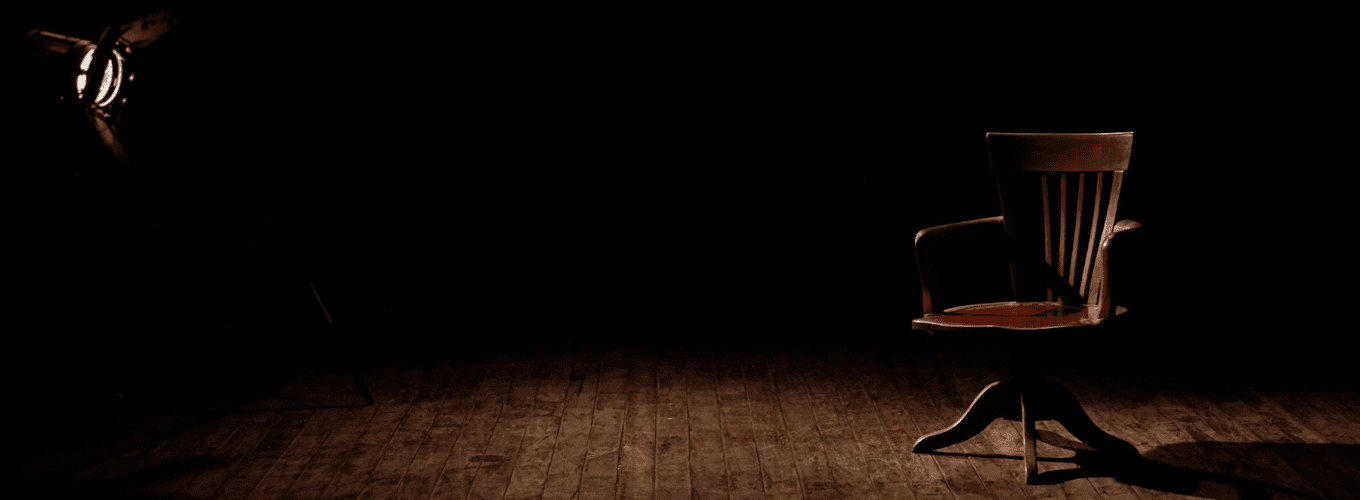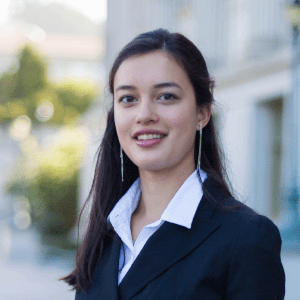
Speaker Spotlight: Alison Van Eenennaam
Undergraduate science communication intern Mira Cheng sits down with speakers from the weekly IGI Seminar Series to discuss their innovations, motivations, and eclectic hobbies.
Dr. Alison Van Eenennaam is a Cooperative Extension Specialist in Animal Biotechnology and Genomics in the Department of Animal Science at the University of California, Davis. I interviewed Dr. Van Eenennaam when she spoke at the IGI on April 16th, 2019. An abridged version of our conversation appears below. I also recommend another IGI blog post, “Got Milk? A Kinder Cup, Through Genome Editing,” in which Hope Henderson summarizes efforts by Alison and others to prevent horn growth in cattle through genome editing.
MC: Could you please tell me a little bit about your journey in becoming a scientist?
AVE: “I’m Australian, you can probably hear. I was raised in Melbourne, Australia. I spent my childhood around animals. I got interested in pursuing agriculture as a result of a career panel. I [studied] agricultural science, and I did my senior year on an exchange program at UC Davis. I met a professor there who taught animal genetics to undergraduates– his name was Juan Fernando Medrano. I got to know him and he was the one who encouraged me to pursue a graduate degree. I did my masters with him and then I worked for a number of years as a dairy and livestock farm advisor in the San Joaquin Valley. Then I decided that I wanted to come back and get my PhD, and I did my PhD with him also.
Since 2002 I’ve been in my current job, which is outreach and extension of basic biotechnology to farmers and livestock producers. So I work a lot with livestock producers, and then I also have a 25 percent research appointment. I love that balance because I get to be out in the field, and talk to producers to understand what their issues are, and bring that back to the university.”
MC: Who were your main role models throughout your journey?
AVE: “Norman Borlaug is pretty cool, and his use of technology to address hunger. Juan Fernando Medrano, he was my advisor. I guess when I was growing up, women were expected to stay home, have babies, and look after the men. Barbara McClintock was probably the best known geneticist at the time and she worked in plants. But there [weren’t] a lot of female role models. Australia has this strange syndrome called ‘tall poppy syndrome’: if you excel in a field they whack you down. If you’re a ‘tall poppy’ in Australia, you never brag, you’re very self-demeaning, you never say, ‘oh, I could do that.’ You kind of have to be seen and not heard.”
MC: Could you please describe the dehorning project that you’re working on?
AVE: “All animal and plant geneticists deal with biology. The plant guys have it hard because they have a cell wall to deal with– transformation and getting the editing reagents into the cells is an issue for them. We have that really easy because there is no cell wall, there’s just a cell membrane, so we actually just microinject the Cas9 protein and some guide RNA and get an edit.
But where do we get that cell from? That’s where it gets hard. We’re typically injecting into oocytes, or one-cell embryos. We go and get the ovaries from culled dairy cows, and we bring those up to Davis. Then we can do in vitro maturation, where you have to aspirate the little oocytes out of the ovary and put them in maturation media overnight. The next day you can microinject with editing reagents and fertilize them. Let’s just say your edit worked perfectly, so you grow your dividing embryos for seven days. That’s the stage where you can transfer it to a recipient cow. She has to be not pregnant herself and in day seven of her cycle. You put the egg in, a miracle occurs sometimes where you get it exactly right, and the embryo will implant and initiate pregnancy. Away you go, and nine months later you have a calf.
All of what I just outlined is incredibly prone to problems that have nothing to do with editing, but rather with the basic biology of fertilization and synchronization of the cows. Even if you didn’t edit anything, it’s only about a 40 to 50 percent conception rate. You do all this work and at the end of the day you’ve got nothing. Whereas if you’re a musician and you write a beautiful sonnet, at the end of the day you’ve got your sonnet. Whereas we’ll spend three months doing all this work, and then we’ll go check and there’s nothing, and it’s as if we didn’t do anything. So those types of uncertainties make it really very expensive and risky to do this work.”

AVE: “It’s an animal welfare issue. For me it’s a really interesting example of how you could use editing to bring in a useful allele from one breed to another, and I think it’s a different framing than how GMOs have traditionally been used to make plants insect-resistant. Here, we’re doing this to try to address an animal welfare issue. The beneficiary of the edit is the cow. That’s a really different framing [compared] to historically the plant GMO discussion. We have 9 million dairy cows in the United States and they get dehorned. I think it’s a relatively simple concept to understand from a science communications perspective. It’s a very visual trait, you actually do see a difference in the animal. There are a lot of unique attributes [to this project] that are interesting.”
MC: What has been the most challenging aspect of your research?
AVE: “The most challenging is the regulation. If the proposed regulation stays in effect, any edited animal becomes an unapproved animal drug. Therefore, they can’t go into the food supply. As any public university with animal herds and flocks can attest, we sell our milk, meat, and eggs as part of the revenue to keep the herds and flocks going. If you take away the opportunity to sell those animals, that means that it becomes really really expensive to do large animal research. So it will more or less shut down my lab.
That [FDA] decision was made in 2017, when we already had pregnancies from the edited bull in utero; they went from being pregnancies to being drugs because of this interpretation of the FDA. That has been the most challenging, because now I have these large ‘animal drugs’ running around in my feedlot. It also has implications in terms of future research projects because the university, or I, cannot afford to incinerate all of the experimental animals. To me, it doesn’t make a lot of sense. It’s frustrating from a scientific perspective because I think regulation should be based on product risk, not on intention of the breeder, which is currently what triggers [regulation]. If you intentionally introduce an alteration, then it’s regulated, but if you just blast [an animal] with radiation and you have no idea what you did, it’s not regulated.”
MC: What is the history of these regulations, and do you see them changing?
AVE: “The FDA has to regulate based on existing statutes. The historical statues that the FDA regulates under is called the Food, Drug, and Cosmetic Act of 1938. Basically it gives them regulatory authority over drugs, so if it’s not a drug, then they can’t exert regulatory authority. So the only way to have regulatory authority is to assert that an edit is a drug. I agree that DNA alters the form and function of an animal, but I don’t agree that it’s a drug.
The USDA regulates plants, and if it’s a [genetically modified] plant that could have been achieved using conventional breeding, the USDA doesn’t consider it to be a GMO. If it could’ve been achieved using conventional breeding and it’s an animal, the FDA considers it a new animal drug. It’s a kingdom difference, which makes no sense. Why does it matter if it’s an animal or a plant? It’s a historical accident of the way the regulatory framework is put together. The sensible thing is not to continue with this insane approach to regulation. How about getting together and saying let’s try and harmonize these regulations, so we’re treating all food the same? That’s where a group of us have put in a petition asking for regulatory harmony around edited food species in the United States, whether they are plants or animals.”
MC: Where do you see your field in ten years?
AVE: “Probably in other countries. That all depends on global trade, how that all works out. If I edit something in Brazil, and they import that to America, what’s the regulation for that? How that’s all going to play out? Maybe it’s good that [genome editing] is going to go to countries where there is food insecurity. Maybe rich, precautionary First World countries that have no food security issues, they can perhaps have the luxury of being precautionary and not allowing safe innovation. I think developing countries should be able to use [genome editing], and I hope that it gets used in countries where it could do a lot of good. I hope at some stage, the First World stops dictating to the rest of the world how they’re allowed to do agriculture. I think it’s morally wrong at the moment.”
MC: What is something that you do a lot that people wouldn’t necessarily expect?
AVE: “I really like Cajun dancing, I love Zydeco. I run a lot, I’ve run the Boston [marathon] three times. Marathons are a lot like doing experiments with cows– you’ve got to be in it for the long run and not get discouraged if you feel bad at mile 13, 14, 15, 16… By the time you get to the end you’ll feel so good. That endorphin rush when you finish a marathon is seriously the most addicting drug on Earth, but it’s so painful to get there.”
MC: If you could describe yourself in three words, what would they be?
AVE: “Optimistic, stubborn, humorous. Sometimes you’ve got to laugh so you don’t cry.”
MC: If you could listen to a conversation between any two people, who would they be?
AVE: “I would like Norman Borlaug to be reincarnated to talk to the groups that have been so opposed to the introduction to GMOs. Norman Borlaug and Vandana Shiva. She’s Indian and very opposed to GMOs. I think that would be a fascinating discussion.”
MC: What advice would you give your younger self?
AVE: “When you decide to leave a country, think about what the impact might be down the road, it’s a big decision. And laugh more.”
 By
Mira Cheng
By
Mira Cheng
